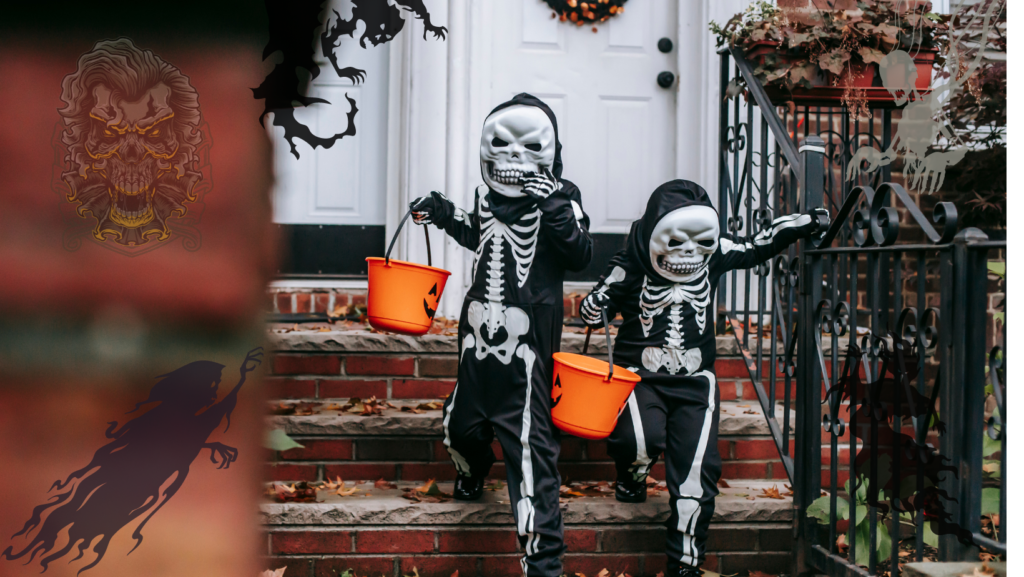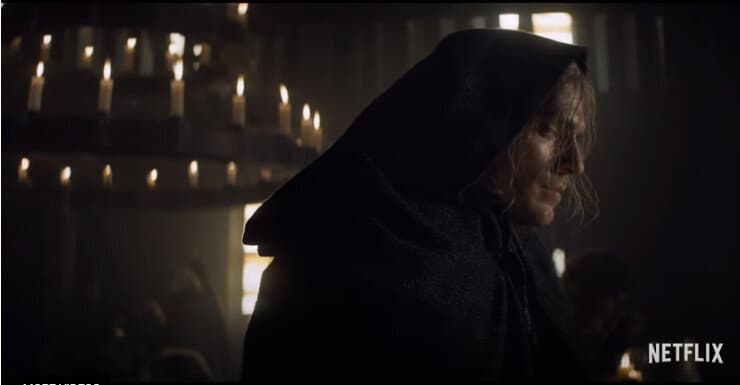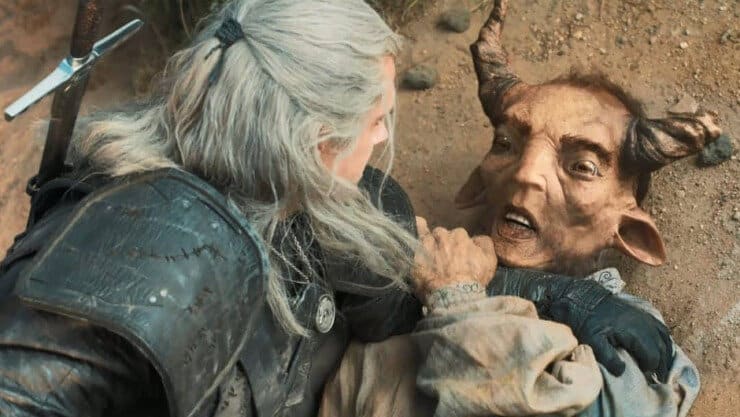Trick or treat! Ah, brings back some great childhood memories doesn’t it? The excitement of deciding what costume you want to wear, planning your route with your friends … such fun and great times. But where did this Halloween tradition come from? What possessed us to dress up in gruesomely scary costumes and go knocking on strangers doors? Well, in this article you’re about to find out the answers to all these questions!
RECEIVE NEW
ARTICLES
EVERY WEEK!
Never miss out again! Be the first to read the newest posts to help you continue learning & expanding your knowledge!
THE HISTORY OF TRICK-OR-TREATING
Trick or treat shenanigans has been a solid tradition in the UK, US and many other countries around the world for quite some time now. But how far back does this treat-or-treating custom go? Halloween comes from Samhain, an ancient Celtic festival which was/is celebrated on October 31st, where those who celebrate it believe the dead will return on this sacred night, so they light bonfires and offer sacrifices to honor the dead.

There is no actual date known as to when the modern day “trick-or-treat” phrase was established. However, as early as 1947, a couple of children’s magazines called Jack and Jill and Children’s Activities both featured “trick-or-treating” in their October issues. Also, in America, in the early 1950’s Disney featured a cartoon with Donald Duck and his nephews called “trick-or-treat” and around this same time there was a Peanuts comic strip showing trick-or-treating. I thought this would be relevant to mention as it was the start of this becoming a well-known phrase, which obviously took off and stuck with us!
CELTIC ORIGINS OF TRICK-OR-TREATING

Some of you might already know this but for those who don’t, during the celebrations of Samhain, the Celts would dress up and disguise themselves in costumes made of animal skins. They did this in order to drive away any malevolent spirits that passed through the thinning veil. They also dressed up tables and left out plates of food/meals to appease any unwelcome spirits and entities.
The Celts believed that every year, as we progress from one year to the next (bare in mind the 1st of November was the start of the new year back then), the living world and the spiritual world would overlap. With this overlap or thinning of the veil as most refer to it as, mean things such as demons, faeries, monsters etc. would roam the earth again. So, dressing up as demons was a way to avoid any harm that may be inflicted on them.
HALLOWEEN AND THE MIDDLE AGES
A custom, known as “mumming” dates back to the Middle Ages and is thought to be the custom that existed before modern day trick-or-treating and where todays “trick-or-treating” originated from, the blending of Pagan traditions and Christianity traditions.

The Samhain bonfires and dressing in costume paired with the decorating of graveyards and lighting candles for the Churches All Souls Day (on November 2nd) merged and evolved into a tradition where poor people (children and sometimes adults) would visit the houses of more wealthier families. These families would give them soul cakes (sweet tasty pastries) for their promise to pray for the souls of the homeowners’ dead relatives and ancestors. The soul cakes of our ancestors were placed outside their homes to prevent mischievous spirits from playing tricks on All Souls’ Day. Nowadays the sweet treats are baked for real-life trick-or-treaters.
NOTE: This practice was known as “souling” later developed into children going door to door dressed up in Halloween costumes asking for food and money.
TRICK OR TREAT & THE COSTUMES
It was in Ireland and Scotland where people took part in a tradition called “guising” (from the word disguising!). Guising involved people dressing up in costume and accepting offerings from the houses they would visit. But, instead of offering to pray for the dead, they would sing a song, or poem, tell a joke or perform some other kind of “trick” before collecting their “treat” which would be either a piece of fruit (especially apples), some nuts or coins. Hence where the name trick or treat originated from!

Both the Celtic Samhaim tradition and the medieval tradition of guising both play a part in today’s Halloween costumes. We all have the same goal, to hide and disguise ourselves so we can blend in with the wickedly spooky spirits who emerge during Halloween/Samhain.
QUESTION: What costume are you going to dress up in for this Halloween?
MODERN DAY TRICK OR TREAT -ING

It was the Irish immigrants who fled the famine in Ireland in the 1840’s who brought and made popular Halloween in the United States. The mass commercialization of Halloween, however, didn’t take a hold for a few more decades. It wasn’t until the early 20th century that the Irish and Scottish communities in the States revived the “Old World” traditions of souling and guising.
Then, around the 1920’s the tricks started to turn into pranks. Pranking people had become the Halloween preferred activity for some of the young’uns who participated in trick-or-treating, tying in with the Great Depression that was going on at the time. It was probably used as a way to vent their feelings and have an outlet.
Halloween mischief went crazy, with it eventually escalating to violent level at times (that’s pretty scary in itself don’t you think?). Because of this, parents and communities demanded changes be made, insisting that more wholesome traditions should take place in order to get the crime in check. This is when a more widespread acceptance of a nice, organized, community-based trick-or-treating tradition was established. This happened in the 1930’s but was soon to be halted with the break out of World War 2 and the sugar rationing!

The postwar baby boomers brought back trick-or-treating which quickly became standard practice for millions of children to dress up and get out there to collect their Halloween candy. Postwar, the candy companies could now capitalize on trick-or-treating after the sugar rations were lifted. This is also the time when families started to decorate their homes with spider webs, pumpkins and ghoulish decorations. They did this as a way to distract the young men during the Great Depression, inviting the trick-or-treaters in for some contained mischief and trickery.
These Candy companies played a big part in the engraining of the trick-or-treating ritual into modern day practice. They launched national marketing campaigns specifically focusing on Halloween and have continued to do so to present day!
INTERESTING FACT: Halloween celebrations in the US continues to be one of the biggest retail spending events of the year with people collectively spending $10.14 billion in 2021 (a record high) with an estimated $10.6 billion set for 2022!
WITCHY TRICKS ON HALLOWEEN
On Halloween, young single ladies would perform their own special magickal tricks. These tricks involved cracking eggs into a bowl and throwing apples peels to see if they can see the initials of their future husbands. Another popular “trick” was to sit in front of a mirror by candle light and try to see a reflection of their future husband in the mirror. Have you ever tried this?

I thought it was notable to point out that Halloween has ties to the ancient Roman festival of Pomona, goddess of fruitful abundance (celebrated on November 1st). She is associated with apples. This is why you will find apples to be considered a symbol of love and fertility and why they have such an association with Halloween. Apples have evolved into the modern-day Halloween tradition of bobbing for apples and the witchy tricks to see their future husbands in the peel of the apples.
CONCLUSION:
Now you can understand and appreciate where this weird and kooky custom of dressing up as spooky ghouls, witches and zombies originates from! The pursuit of tasty sweets treats from neighbors comes from the mingling of old traditions from Pagan and Chrisitan roots. Nowadays, you won’t necessarily find children or young teens performing any tricks for their treats, but you might still have the odd one or two enjoying the pranking aspect! (thinking of loo rolls and eggs lol). It’s good to know that the ancient Celtic tradition of hiding behind masks or painting your face black, wearing old clothing (so ghosts don’t see you) still continues today. I always look forward to seeing the wave of people dressing up as mischievous devils, angels, zombies, witches and other creepy Halloween characters! It always brings a smile to my face. So whether your taking part in the dressing up, making Halloween-y black and orange cookies or cupcakes (which represent the harvest with orange and death with black) just enjoy it, and remember the reason we do this … honoring our ancestors and family who have passed on. Blessed be!
RECEIVE NEW
ARTICLES
EVERY WEEK!
Never miss out again! Be the first to read the newest posts to help you continue learning & expanding your knowledge!











